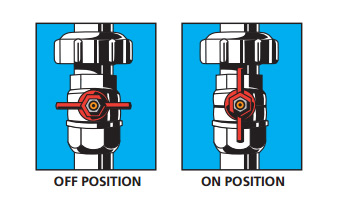Gas Leaks
Properties of Natural Gas
Natural gas is a flammable gas.
Natural gas is predominately methane and is lighter than air, in the event of an unconfined leak to atmosphere the gas can be expected to rise and dissipate.
Natural gas is naturally colourless and odourless but has an odourant added called ethyl mercaptan to assist in detecting leaks. In the event of a leak, a rotten cabbage smell can be detected.
Gas leaks have the potential to pose a fire or explosion hazard under certain circumstances and there must be gas (fuel) and air (oxygen) in the correct proportions as well as an ignition source for this to occur, as such all leaks should be reported and addressed.
Kleenheat encourages you to ensure all members of your household are aware of what to do in the event of a gas leak and the safe use of gas.
Gas Leaks – if you smell gas inside your premises
- Ensure there are no sources of ignition;
- Turn off all pilot lights and appliances;
- Open all windows and doors to encourage ventilation until the smell dissipates;
- If the smell diminishes this could indicate an appliance fault and you will need to contact a licenced gasfitter to check your appliances;
- If you still smell gas all occupants must immediately leave the premises to a safe location away from the source of the gas smell. Do not re-enter the premises until advised otherwise;
- Turn off your gas at the meter by switching the gas tap to the off position. Instructions are inside your meter box and are shown in the diagram below

- Call for assistance ensuring you use a phone outside the house and completely away from the source of the gas smell;
Natural Gas customers – call 13 13 52.
Gas Leaks – if you smell gas outside your premises or in a street
- Ensure there are no sources of ignition;
- Turn off all pilot lights and appliances;
- Move people to a safe location away from the gas smell;
- Turn off your gas at the meter by switching the gas tap to the off position. Instructions are inside your meter box and are shown in the diagram below

Natural Gas customers – call 13 13 52.
Carbon Monoxide
Carbon Monoxide is an odourless, tasteless, non-visible gas that can be formed when fuels are burned without a sufficient supply of air. It can be produced when appliances are not properly installed, maintained or used; when vent pipes become clogged with debris, have gaps, leaks, spaces and rust-through spots; and when appliances are improperly vented.
Carbon Monoxide Poisoning
Carbon Monoxide combines with haemoglobin in blood and is pumped around the body. This prevents the blood from carrying oxygen and starves the body tissues. Even small concentrations of carbon monoxide can be lethal.
Some of the symptoms associated with inhaling Carbon Monoxide are:
- Giddiness;
- Lack of muscle control;
- Semi-consciousness; and
- Lips, nose, ears and cheeks becoming bright red.
The best prevention for Carbon Monoxide problems is to have appliances installed properly and periodically inspected and maintained.
Asphyxiation
If gas escapes and builds up, at the expense of air, in an open area it can have a very quick effect on a person. Asphyxiation is a lack of oxygen in the blood and the following symptoms may become apparent:
- Faintness;
- Weakness;
- Partial or complete lack of consciousness;
- A sense of well-being and may act aggressively;
- Lips and cheeks becoming blue; and
- All facial features turning blue (the person may be unconscious at this stage).
Resuscitation
Call an ambulance immediately. Move the person to a gas-free area. If you are qualified to do so, begin resuscitation of the person, being careful not to inhale exhausted air from the patient.
How to Identify a Leak:
- A foul smell, resembling rotting cabbage;
- Ice forming around the top of the LPG cylinder or near the valve;
- Dirt being blown into the air;
Water being blown into the air at a pond, river or creek;
Continuous bubbling in wet, flooded areas;
Fire at or near exposed pipes;
Flames apparently emanating from the ground; and
Dead or brown vegetation (eg patches of grass) in an
otherwise moist or green lawn.